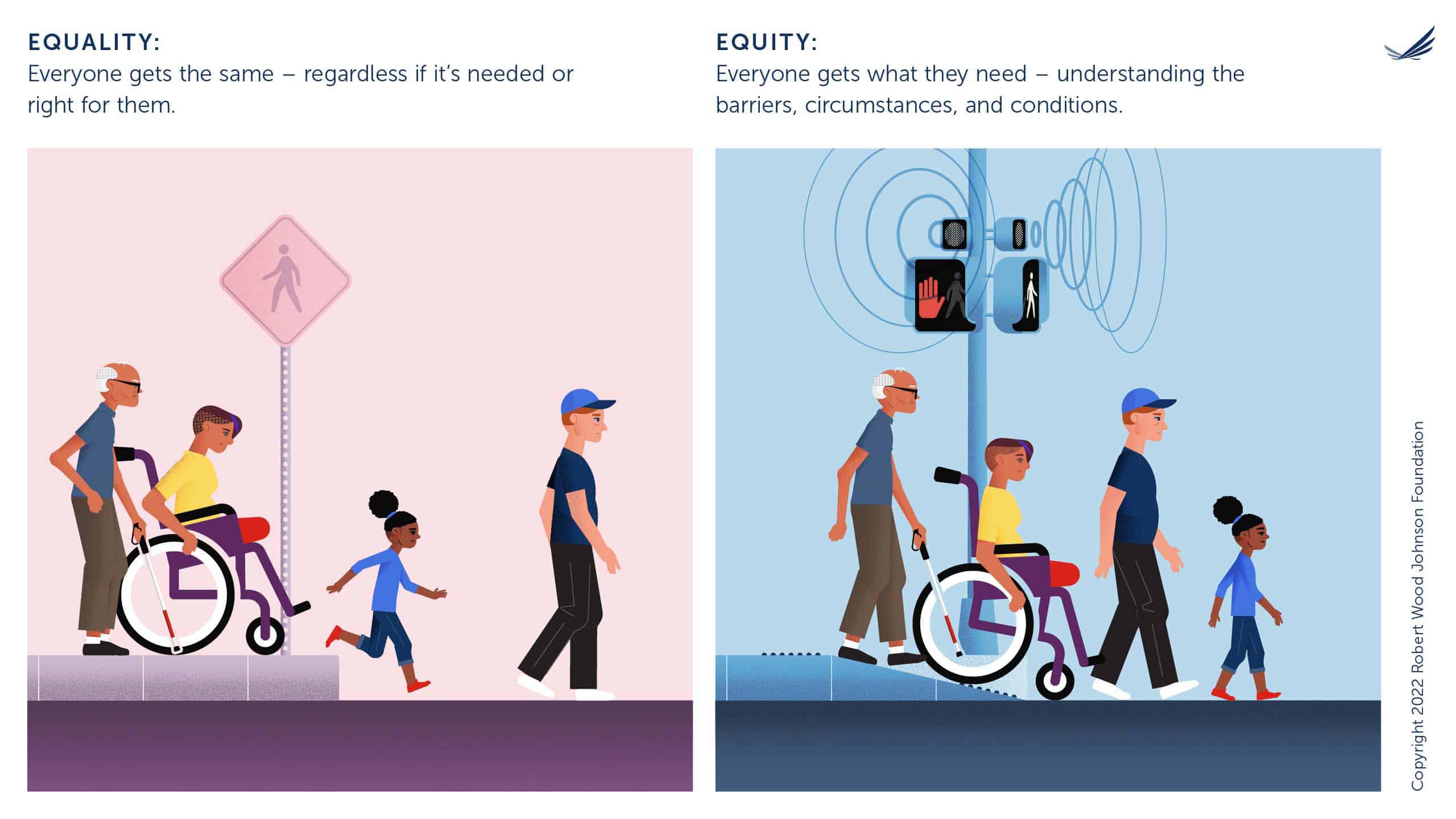
07 Apr The Importance of DEI in Corporate Executive Recruitment
Diversity, equity, and inclusion (DEI) are highly prevalent topics of today’s discussions surrounding the workplace. Prospective employees, striving to be seen and heard where they work, are seeking organizations that align with their ethics. Among these is the desire to see the demographics of the real world reflected in the workplace.
There are plenty of reasons for placing DEI at the hub of your organizational culture and talent acquisition efforts. The benefits of diversity include enhanced employee satisfaction, financial performance, and innovation. In fact, companies with greater ethnic and racial variety are 35% more likely to financially surpass their competition and those in the top 25% for gender diversity are 15% more likely to exceed their national industry average in profits. Simply put, companies with more organizational diversity hold a competitive edge over today’s market, not only in regard to earnings and creativity but also in attracting and retaining top executive talent.
Making a commitment to diversity is not only a boon to company culture, engagement, and financials but a moral imperative that enhances the psychological safety of current and prospective employees. Today, we’ll discuss how your company can increase its internal diversity by centering DEI at the hub of its recruitment strategy.
Defining Diversity, Equity, and Inclusion
Before developing a diversity recruitment strategy, it’s important to establish a solid foundation of what it means to utilize a recruitment practice rooted in diversity, equity, and inclusion. Let’s explore the definitions of each term comprising the acronym DEI.

I am text block. Click edit button to change this text. Lorem ipsum dolor sit amet, consectetur adipiscing elit. Ut elit tellus, luctus nec ullamcorper mattis, pulvinar dapibus leo.


INCLUSION: This term refers to the degree to which employees, team members, and others experience feelings of appreciation, acknowledgment, belonging, and value within an organizational environment. It also refers to the extent to which a company empowers its workforce to contribute in meaningful and significant ways. An inclusive culture imparts upon its workforce that everyone’s contributions are valued and that employees will be heard, supported, and safe as they navigate their day-to-day responsibilities.
Remember that representation and inclusion are different. A group may be well represented but not feel included due to persistent norms, salary discrepancies, unintentional or purposeful discrimination, and other factors.
What Does It Mean to Hire for Diversity?
Hiring for diversity, at its very core, is hiring with intentionality. It means utilizing search strategies that reduce the chances of biases entering any stage of the hiring process. Let’s discover some techniques on how to incorporate intentionality into your organization’s sourcing, screening, and hiring stages.
How to Implement a Diversity Recruiting Strategy
Embedding DEI into an organization’s search process requires careful reconsideration at each stage, starting with sourcing candidates.
Sourcing
One of the most effective methods to recruit a diverse talent pool is ensuring that you are reaching your intended audience. Focusing on the candidate’s application experience can go a long way in achieving this goal. For more information on diversity sourcing, check out this Pierpoint article.
Broaden your range of potential candidates by adjusting the wording and length of your job postings.
Using language intentionally and mindfully is a powerful tool in diverse talent acquisition, and language choice is a key determiner in attracting or repelling underrepresented talent. Keep in mind that the use of certain terms over others can skew the overall makeup of your applicant pool.
Use gender-neutral wording in your job description. Avoid using biased words that are typically associated with a particular gender, such as “assertive” and “rockstar” (male-coded terms) to encourage women and underrepresented talent to apply.
Reduce the list of requirements by focusing on the must-haves, not the nice-to-haves. Removing barriers, including unnecessary qualifications, will increase the likelihood that diverse candidates will apply. Studies show, for example, that female professionals apply for jobs only if they meet 100% of the requirements.
Source your candidates from a variety of places and focus on places where diverse talent congregates.
Take the initiative to seek out talent networks and channels where diverse, qualified candidates gather. This can include job boards dedicated to certain groups (veterans, people with disabilities, women in technology, and so on) and hosting job fairs in overlooked areas and communities.
Screening
Once you have a talented and varying pool of candidates, you can consider the following strategies for eliminating bias during your organization’s screening process.
Utilize blind resumes.
Because resume details like names, schools, and locations can imply an individual’s gender identity, race, religion, or socioeconomic background, it is becoming more popular to use blind resumes to remove bias from the screening stage. Blind resumes redact or hide personal information that can impact hiring decisions, allowing hiring managers and recruiters to focus on relevant work experience only.
Utilize blind interviews early in the interview process.
Like blind resumes, blind interviews serve the same function in removing bias from the screening process. Blind interviews are fantastic for early conversations with candidates. They involve sending text-based questions to candidates via email, text, or another platform, and candidates can then reply to these questions anonymously, providing information about their expertise and background without providing personal information.
Reconsider the traits for which you screen.
It’s important to question the traits you are seeking in candidates to determine whether these traits are rooted in your own bias. Are you guiding the results toward certain groups or types of people? If so, it’s time to reconsider your screening methods to attract a broader range of quality talent.
Hiring
Because it’s likely that you will have a better understanding of who each candidate is at the hiring stage, it is often more difficult to combat bias at this point. However, there are still methods you can utilize to ensure equity and fairness in your hiring decisions.
Cultivate diverse candidate pools.
Intentionally developing a diverse candidate pool in which there is more than one individual representing a single demographic is essential to combatting decision bias. Harvard Business Review has found that when there are at least two minority candidates in a talent pool, the odds of hiring a minority candidate are 194 times greater.
Make hiring decisions based on qualifications, not on “fit.”
Use the job description and qualifications as your guide when assessing an applicant’s skills and expertise, focusing on what makes them unique and beneficial to your organization. Hiring for “culture fit,” while seemingly reasonable, can be riddled with unconscious biases. Instead of seeking a culture fit, it’s better to search for a “culture add.”
Build Strong Corporate Leadership Teams with a DEI Lens
Scion Executive Search (SES) is a socially conscious executive search firm that empowers for-profit organizations to cultivate exceptional leadership teams with an emphasis on diversity, equity, and inclusion. Focusing on growing DEI in leadership teams is more than just a strategy; it improves company culture and attracts qualified job candidates to your organization. As experts in national executive search, SES combines the principles of DEI with our proven executive recruitment process to connect our clients with a broad range of qualified and proven professionals that represent many different diverse backgrounds and perspectives. Scion Executive Search stands ready to connect you with the talent you’re searching for! Contact us today to get a search started or visit our website to find out more about us!
About the Author
Jennifer Warren, Technical Writer (she/her/hers)
Jennifer Warren is an enthusiastic and meticulous technical writer at Scion Executive Search (SES). Committed to excellence and constant growth, Jennifer draws on her strong editorial and organizational skills to expedite executive searches for businesses and organizations. Those who work with Jennifer praise her for her initiative, strong language skills, transparent communication, and enthusiasm to support her clients and colleagues.
Jennifer has spent most of her career in the publishing industry. Before joining SES, she worked at a crafts book publisher for seven years, first as a production editor, preparing manuscripts for print, and then as an associate editor, curating content for new publications. Jennifer has also worked in the nonprofit sector as a grant writer, preparing and submitting applications for program funding. She graduated Summa Cum Laude from California State University East Bay with a Bachelor of Arts in English.


